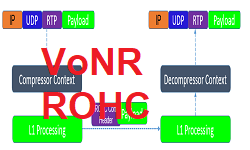5G VoNR Deployment Strategy for Existing Service Providers
5G VoNR
As 5G network are rolling out, it is very much required for Service Providers to enable basic Voice services. To achieve this, the 3GPP has defined the requirements for 5G networks to support Voice/Video call Service using IMS. In 5G, radio access technology is known as New Radio (NR), and the Voice/video call services using 5G RAN and 5G Core is known as Voice over New Radio-VoNR.
To deliver the Voice/Video service over 5G NR, Service Providers can then integrate their existing IMS network to the new 5G Systems, but this is not straight forward as 5G Core support service based architecture using http instead of Diameter Protocol used in legacy IMS network. The existing IMS network either needs to upgrade to support http or a interworking nodes need to be added to support conversion of Diameter message to http messages and visa versa. In this post we will discuss different strategies which operator can consider to provide VoNR Services.
Following are the main requirements for any operators to support Full VoNR services.
- Currently providing VoLTE service with IMS core network
- Full blanket network coverage with 5G gNB and 5G Core
- No existing 4G LTE Coverage
If above is met then the operator can consider the following strategy to implement VoNR in the network
- Strategy#1: Deploy an UDM with 5G Core which can support HSS functionality for IMS as well
- Strategy#2: Deploy an IWF to convert diameter messages to http and integrate the existing IMS network with new 5GC
- Strategy#3: Upgrade to new IMS nodes which is capable to support the HTTP based interfaces and connects with the new 5G core NFs
Strategy#1 Deployement with DRA (Diameter Routing Agent)
Using this strategy Service Provider can incorporates a node named as Diameter Routing Agent (DRA) for a smooth and faster roll out of 5G voice services. DRA helps in proper routing of diameter messages between 5G Core and IMS nodes. Mostly all network vendors have designed and developed converged applications like UDM with HSS, PCF with PCRF, this can help the operator to connect the IMS network directly to the new 5G Core without any change in their existing IMS network with minimum efforts. The only change required by the operator here is to make sure the diameter message related to the 5G user contexts are correctly routed to the 5G UDM and PCF with the help of a DRA.

Strategy#2 Deployement with IWF (Inter Working Function)
In this strategy, An Inter Working Function (IWF) node can to be installed in between the 5G Core Network and IMS Core. The IWF responsibility is to convert the HTTP messages to the diameter and vice versa. This stragtey can be used if the new UDM network function in 5G core does not support the diameter protocol. This helps the Service Providers to implement the VoNR Service faster without disturbing the existing IMS network nodes at Deployment and Operation cost of new IWF node.

Strategy#3 Deployment with full http interface support
In this stragtey, the existing IMS can not be used, it requires the upgrade to new IMS which is capable to support the Service Based Architecture or HTTP service required to inter-work with 5G Core. All the IMS nodes in the network need to support the “Nhss_ims” service exposed by 5G core network functions. This helps the Service Providers to eliminate the older technologies in the 5G core and can be considered as ideal strategy for Service Providers who are looking to deploying a new IMS core as part of 5G deployment.

References:
Related Post:
- 5G Voice Services Implementation Options
- 5G NAS and RRC Signalling Parameters for Voice Service Support
- Voice over NR Call Flow
- VoNR with Robust Header Compression (ROHC)
- VoNR Control Plane KPIs – Key Performance Indicator



